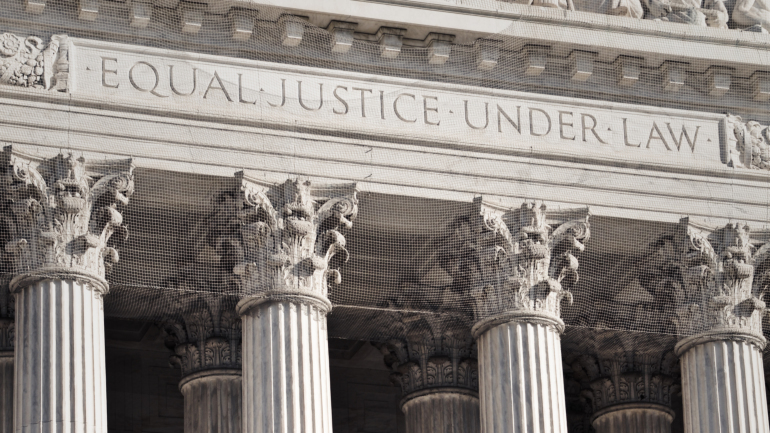Legal Update
Sep 9, 2020
ESG Disclosures: Lessons Learned and Best Practices [Part 3 of 4]
In our previous alert, we described the sustainability reporting ecosystem shaping the disclosure parameters and approaches to voluntary disclosure given the lack of regulatory mandates on disclosure. As a result, companies are navigating their way towards a more transparent and accountable way to engage with their stakeholders using a variety of ESG (environmental, social and governance) disclosures. However, the uptick in disclosures has caused companies to face new theories of liability and litigation.
In this alert, we discuss the creative avenues in which stakeholders have pursued claims against entities related to their disclosures. The cases filed so far provide some insights and guideposts for companies to consider when preparing their disclosures and mitigating litigation risks. But, as the business case for financial impact of ESG considerations continues to be refined, stakeholders push for a “know and show” approach, and third-party verification becomes more sophisticated, it’s likely that the legal claims will only increase.
Theories of Liability
In the current climate of increased social accountability and reputational risk, companies are starting to face litigation resulting from ESG disclosures. These cases are being brought not only by shareholders, but also by non-government organizations (NGOs) and consumers. The cases cross multiple industries, including technology, consumer goods, mining, metals, and automotive. In addition, they have covered a range of ESG issues that include ethics, corruption, use of forced or child labor in supply chains, ethical sourcing, safety, the environment and board diversity.
Thus far, litigation resulting from ESG disclosures generally arises in two contexts: (1) securities fraud claims under federal law, or (2) consumer protection or consumer fraud claims under federal or state laws.
In both contexts, plaintiffs usually allege that the company provided false or misleading information or omitted material information in their ESG statements (whether in formal government filings or less formal disclosure formats), including sustainability reports, corporate social responsibility reports, or codes of conduct. Plaintiffs allege that they relied on these statements in making investment or purchasing decisions. Stakeholders commonly bring these claims after serious accidents or disasters reveal purported misstatements or omissions in ESG disclosures. Cases that survive the motion to dismiss phase are generally settled, sometimes for very large amounts.
In the securities fraud context, claims are most commonly asserted under Section 10(b) of the Securities Exchange Act of 1934 (“Exchange Act”) and SEC Rule 10b-5, which require companies, directors and officers to make accurate and not misleading statements to investors. Shareholders have also brought claims against corporations under Sections 11 and 12(a)(2) of the Securities Act of 1933 (the “Securities Act”), which provides strict liability for material misstatements and omissions made in connection with securities offerings. Directors and officers can also face “control person” liability under Section 20(a) of the Exchange Act for primary violations of federal securities law. In these lawsuits, courts have generally found aspirational language or forward looking statements regarding ESG non-actionable (particularly where adequate and specific cautionary language is included). In contrast, cases are more likely to be allowed to proceed where factual statements, the accuracy of which could be proven, are at issue.
Consumer fraud or protection claims are generally brought under state law including, for example, California's Consumers Legal Remedies Act, Unfair Competition Law or False Advertising Law. Cases brought under consumer protection or fraud theories have been slightly less successful on motions to dismiss than securities fraud claims. In these cases, some courts have found that companies do not have a duty to disclose ESG information beyond known product safety and defect issues. Courts have also found that consumers do not have standing to bring such a cause of action where they did not rely upon any such ESG information in making their purchasing decision.
Lessons for ESG Disclosures
Drawing on the cases to date, the following can be helpful guides in preparing ESG disclosures.
- Consider Context and Timing: ESG disclosures do not exist in a vacuum. The context and timing of a disclosure impacts how it may be interpreted by stakeholders and whether it is considered misleading. For example, statements issued in response to accidents or government investigations may be more likely to be considered “material.” In addition, when ESG disclosures are included in product packaging or government filings, plaintiffs may be able to prove reliance and materiality more easily.
- Use Aspirational Language: Word choice is critical in reducing litigation risks associated with ESG statements. As discussed above, courts have generally found an absence of liability where aspirational language or statements about future goals are used, including qualifying language such as “aim,””belief,” “expect,” “goal,” and “ask.” In contrast, courts usually allow claims to proceed where the disclosures include concrete, statements of fact, which could be proven or disproven. Aspirational language aligns well with companies that look to the UN Sustainable Development Goals to shape their ESG strategy.
Related, cautionary language can help demonstrate that they are aspirational in nature and, therefore, non-actionable. This is especially true when making statements related to the impact of climate change, given the unpredictability of future events. Disclosures should include disclaiming language indicating that they should not be mistaken for “guarantees”, “promises”, “predictions” or “forecasts.” They should also indicate that they are based on various assumptions, which may not ultimately pan out as anticipated. Additionally, in situations where investors sign offering memoranda prior to making investments, the inclusion of language indicating that investors only relied upon information contained in the memoranda can minimize liability for any ESG statements made outside of such memoranda. - Review for Accuracy: Claims are most likely to survive the motion to dismiss stage, where plaintiffs sufficiently allege that a factual statement in a disclosure is false or misleading. Inevitably, ESG disclosures will likely contain some statements of existing fact and facts that can be verified or called into question by third parties. This is especially true when it comes to industries that have a high risk of having human rights abuses that are monitored by third parties, like Human Rights Watch and others. These statements should be thoroughly reviewed and verified by internal parties with sufficient knowledge to confirm their accuracy.
- Ensure Consistency: Given the wide variety of disclosures and rankings systems, companies are more commonly engaging in different types of ESG disclosures, using different platforms, including social media. Inconsistent statements can be used as evidence to demonstrate that a disclosure is false or misleading. Thus, companies must ensure that their various disclosures are consistent with one another. For example, a company should confirm that ESG statements made on its website do not conflict with any ESG statements in more formal regulatory filings. Liability could also be reduced by including qualifying language in formal regulatory filings that any less formal electronic ESG disclosures are not deemed to be part of or incorporated into any governmental filing.
- Disclose Areas for Improvement: If ESG statements set forth areas of success, it’s helpful to provide a complete picture and disclose areas of potential weakness. Whether or not a company is disclosure-oriented, this can be an unsettling approach and not desirable given a general preference to only show what ESG facets look good. Examples include areas of gender pay, diversity and forced labor. However, stakeholders often meet statements that are too positive with skepticism. For example, one company recently faced securities litigation after making statements about its commitment to diversity. These statements were allegedly false or misleading, because they omitted information regarding recent investigations into diversity issues at the company. Additionally, third parties have knowledge of high risk areas for forced labor in the supply chains and are looking for companies to recognize the existence of it and play a role in addressing it in line with the expectations of the UN Guiding Principles on Business and Human Rights.
As a result, painting a picture that ESG practices are great or close to perfect could potentially expose entities to litigation. ESG disclosures noting areas of success have been found non-actionable where areas of improvement were also included.
Practices to Prepare ESG Disclosures
- Create a Cross-Functional Team: Many organizations are often siloed, which increases risks related to the accuracy and completeness of disclosures. Creating an ESG team of individuals across functional areas is essential to minimizing risk. This team should be delegated responsibilities related to drafting, reviewing and aligning any ESG statements.
- Deploy Trainings: Any employees involved in the drafting or reviewing process should receive regular trainings on associated legal risks. New disclosure parameters and best practices will evolve quickly. Corporate counsel should ensure awareness of the developments and ensure that these trainings remain contemporary and relevant.
- Create a Reasonable Board Oversight Process: In order to minimize liability, a Board oversight and reporting process should be implemented and regularly reviewed for improvements. Board oversight is essential in preventing and responding to risks created by ESG statements, especially since the Board and senior management face liability.
- Don’t overlook D&O Insurance Coverage: In a world with increased focus on corporate social accountability, as well as a general increase in securities lawsuits, companies and their directors and officers may face litigation despite taking all steps to minimize risk and ensure disclosure compliancy. As an additional layer of protection, D&O insurance policies should be reviewed carefully to ensure they cover ESG related claims.
Up Next
As we discussed, Board oversight and procedures are critical in minimizing risks related to ESG disclosures and needed for the “G” in ESG. In our next post, we highlight best practices with respect to corporate governance and the role of executive compensation to incentivize ESG strategies.
Seyfarth Shaw LLP provides this information as a service to clients and other friends for educational purposes only. It should not be construed or relied on as legal advice or to create a lawyer-client relationship. Readers should not act upon this information without seeking advice from their professional advisers.


